What Is Button In Garment: Your Easy Guide To Types And Uses
Today, we’re going to talk about something small but very useful on our clothes: buttons! This guide will use very simple words so everyone, including young readers and people learning English, can understand. Buttons are tiny, but they do big jobs for our clothes.
They help keep our clothes closed, and they can also make them look nice. You don’t need to know anything special about clothes to read this. This guide is all about understanding clothing buttons. We will simply define what a clothing button is for you. Let’s read!
1.1 The basic meaning
A button is a small piece, often round, that we use on our clothing. Its main job is to fasten (or close) parts of a garment. A garment is just another word for a piece of clothing. A fastener is anything that holds two parts of your clothes together.
So, a button is a type of clothing fastener. You might ask, what are garment fasteners called buttons? Yes, buttons are a very common type of fastener for clothes! Our goal is to define button for clothes in the easiest way.
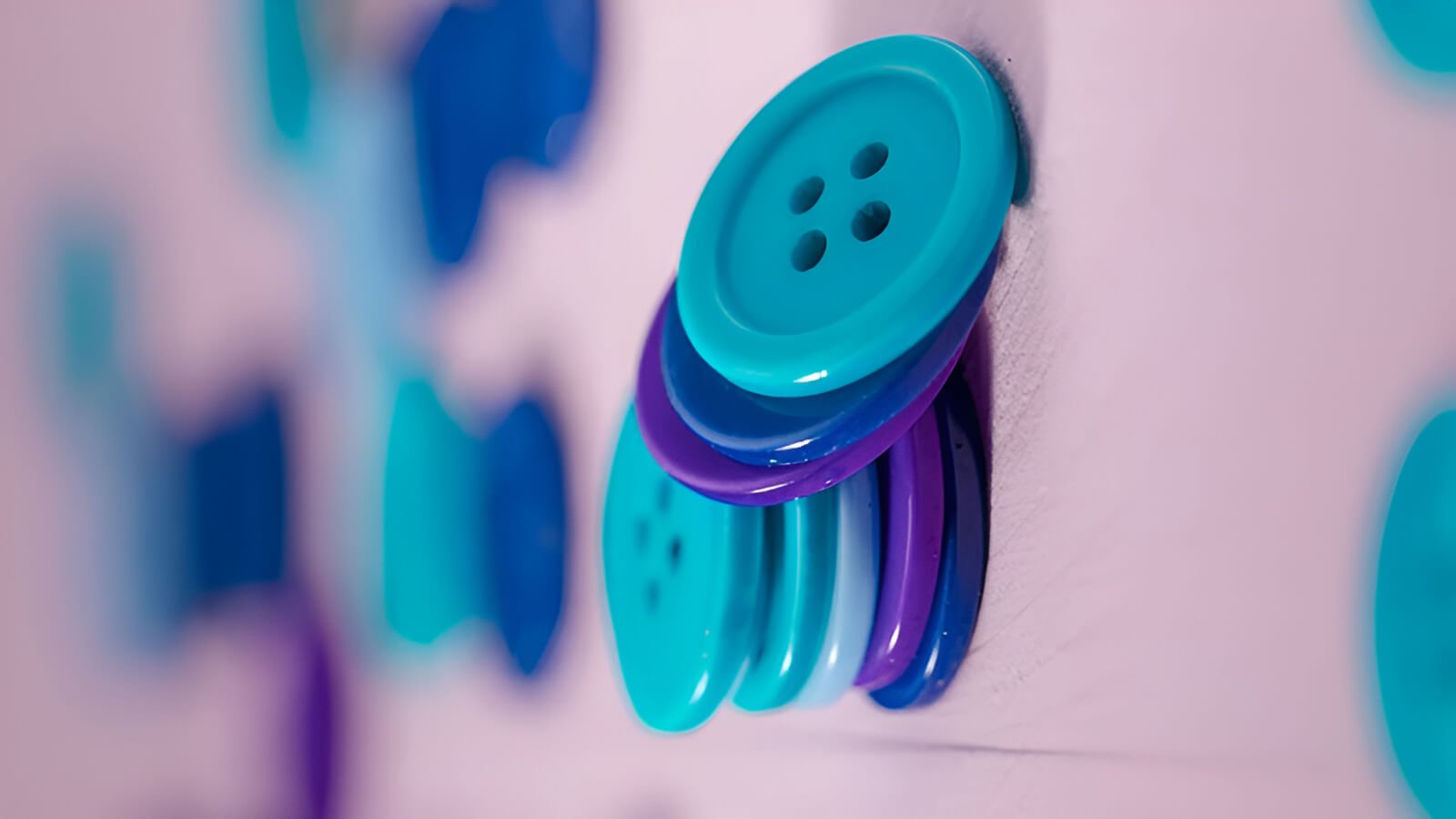
1.2 Its main job
The main job of a button is fastening. This means it helps you close parts of your clothes. For example, it closes the front of your shirt, or the top of your pants to keep them up. So, garments use buttons for closure – meaning, clothes use buttons to keep them closed. Most of the time, a button has a job to do (this is called functional). But sometimes, a button is just there to look nice (this is called decorative).
1.3 Teamwork
A button usually can’t do its job alone. It needs a partner! This partner is a special cut or loop in the fabric called a buttonhole (a slit or opening in fabric that a button passes through to fasten a garment). The button slips through the buttonhole. This is how it holds the clothing closed. Buttonholes work with buttons to secure your clothes.
2.1 Use 1: Keeping clothes together
The number one job for most buttons is to keep parts of our clothes together.
Here are some examples:
- The buttons on your shirt help keep the front closed so it doesn’t flap open.
- The button on your trousers (or pants, as some people say) helps keep them up at your waist.
- Buttons on a coat help keep it closed to keep you warm when it’s cold.
When buttons do these jobs, we say they are ‘functional’. This means they are working and have a purpose.
You see these functional buttons on all sorts of garment categories, like shirts, coats, trousers, and more!
2.2 Use 2: Making clothes look good (decoration)
Buttons don’t always have to work! Sometimes, buttons are on clothes just to make them look nicer or more interesting. They are like pretty fashion details.
Here are some examples:
- You might see some shiny gold buttons sewn onto the sleeves of a jacket. They don’t open anything; they are just for decoration.
- A child’s dress might have colorful, shaped buttons sewn on in a pattern, but they don’t actually close any part of the dress.
A button used for decoration might have special features on its top, like a sparkly stone, a nice pattern, or a cool shape. When buttons are just for looks, we say they are ‘decorative’. Buttons can also be decorative elements on our clothes.
Yes, many buttons fasten and decorate! Many times, a button does both jobs! For example, the buttons on a nice coat will close it up to keep you warm (that’s functional). But the designer also chose those buttons because they look good and match the style of the coat (that’s decorative).
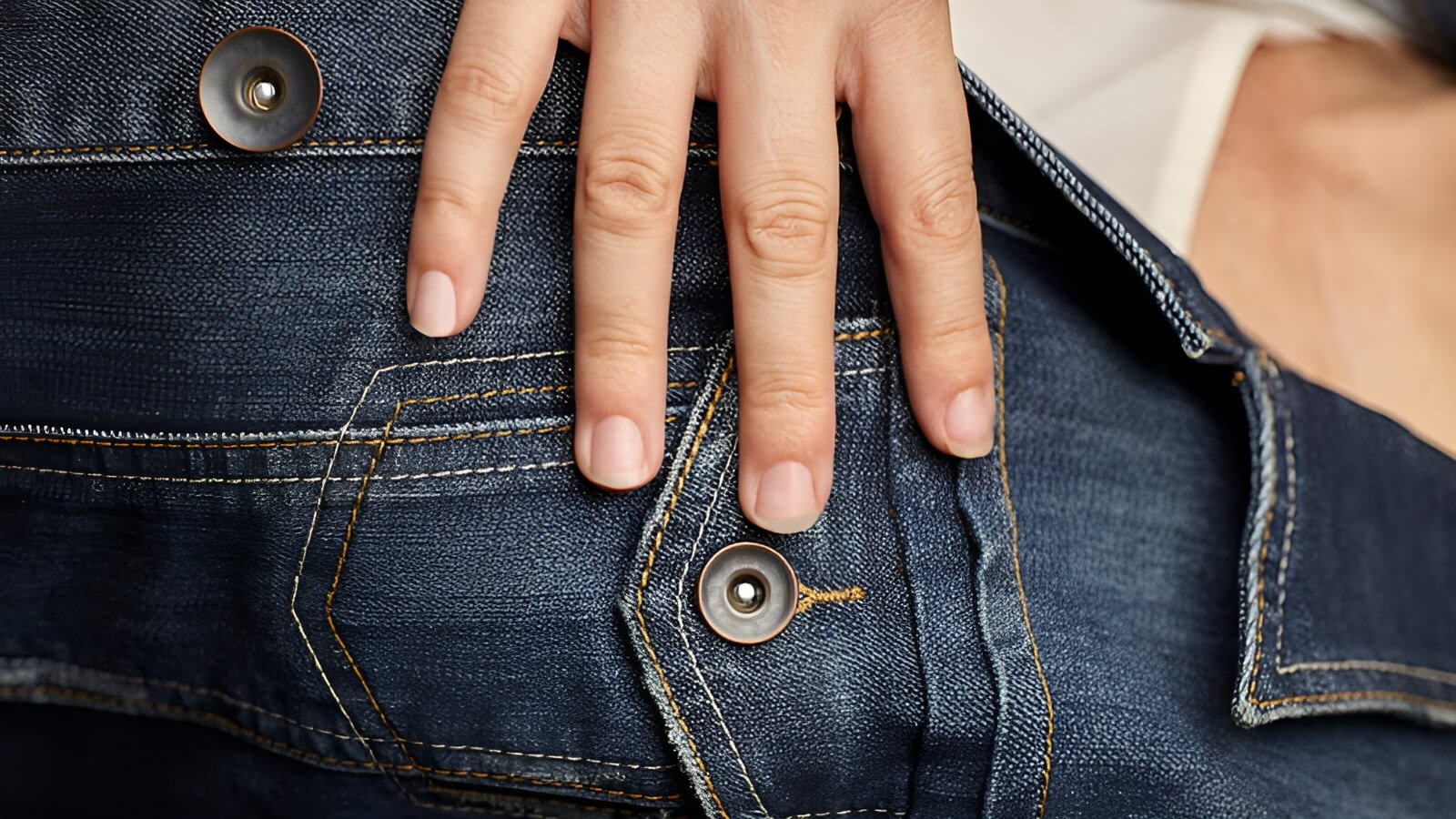
Not all buttons look the same! There are different button types. Let’s learn about some common ones you see on clothes.
- How they look: These are probably the buttons you see most often. They are flat and usually have two or four little holes in the middle. These holes go right through the button. These are a common product type known as flat buttons, and their features often include a number of holes.
- How to attach them: To put these on clothes, you use a needle and thread. You do sewing (the act of joining or attaching things using stitches) by passing the needle and thread through these holes and then through the fabric many times to hold the button on tight. This attachment method (sew-through) shows how buttons are attached to fabric in garments.
- Commonly found on: You find flat buttons on shirts, light jackets, pants, skirts, and many other clothes. This helps identify different types of buttons for shirts. Buttons on shirts are often a medium size. This size is sometimes called ’16 Lignes’ (Lignes is a special way to measure buttons, where 1 Ligne = 0.635mm), but you’ll just see it as a normal shirt button.
- How they look: These buttons are a bit different. They don’t have holes on the top part that you see. Instead, if you turn them over, they have a little loop or a small stem on the back. This loop or stem is called the shank (a small protrusion on the back of a button through which thread is passed for attachment). These are product types: shank buttons or button – type – shank button.
- How to attach them: You do sewing by stitching through this shank to attach the button to the fabric. Because of the shank, the button stands up a little bit from the cloth. This is very good for thicker fabrics, like on coats, because it gives some space for the thick cloth to fit under the button when it’s closed. This is another attachment method (e.g., sew-through, shank) for how are buttons attached to fabric in garments.
- Commonly found on: Coats, heavy jackets, and sometimes on fancy clothes or uniforms where you want the button to look a bit more special or stand out.
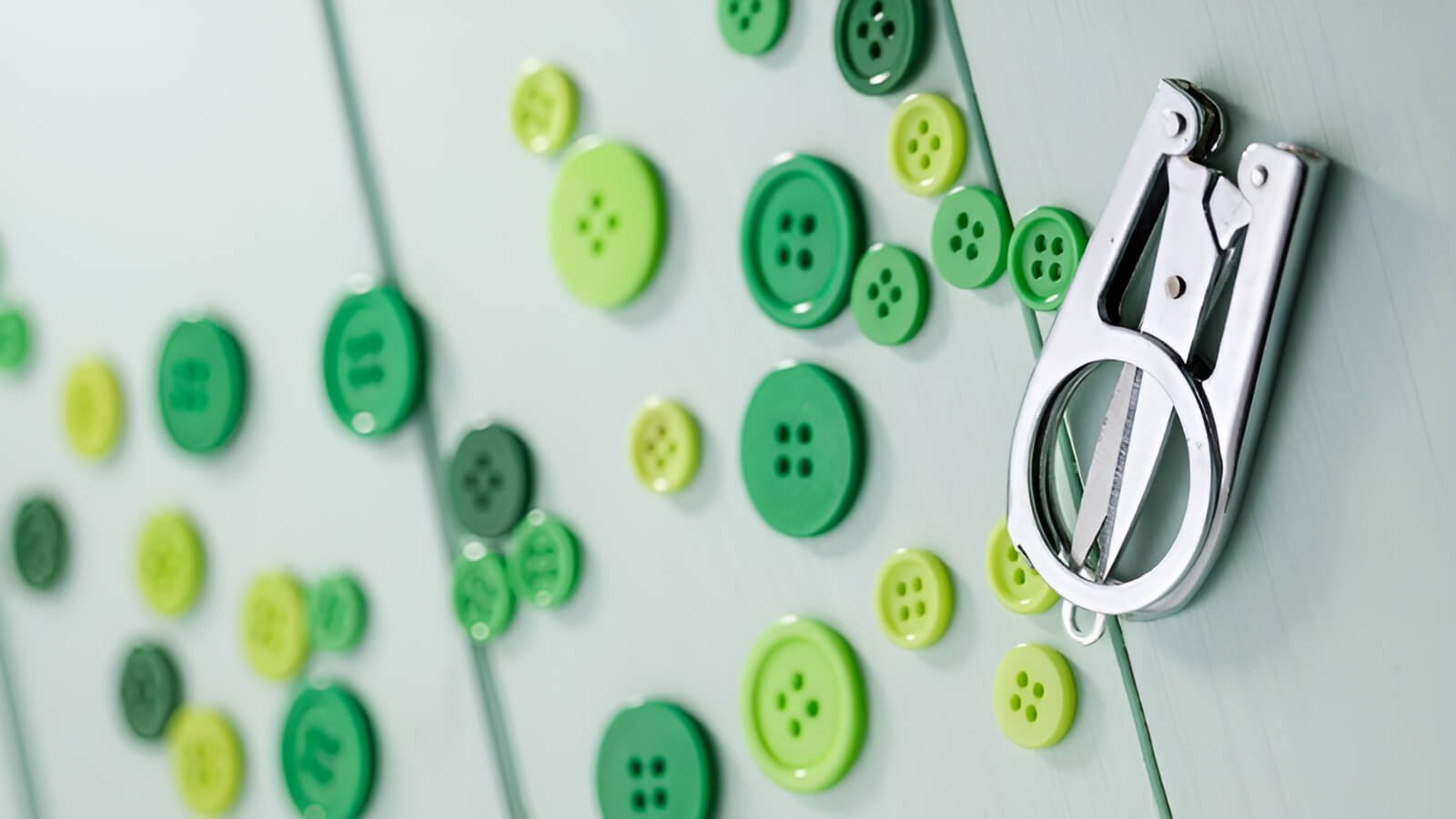
- How they look: These are cool because they come in two parts that fit together. One part has a little bump (like a tiny hill, sometimes called a stud). The other part has a hole (or socket) that the bump fits into perfectly. These are product types: snap fasteners.
- How they work: You press the two parts together, and they ‘snap!’ or click closed. To open them, you just pull the two parts away from each other.
- Commonly found on: You see snap fasteners on baby clothes (because they are very easy for parents to open and close quickly!), on casual jackets like jean jackets, on some types of bags, and on sportswear.
3.4 Briefly: other types
- Toggle buttons: Toggle buttons are long and thin, like a little stick. They are often made of wood or plastic. Instead of a buttonhole, they pass through a loop made of cord or fabric. You often see these on some types of coats, like duffle coats.
- Fabric-covered buttons: These are buttons that are covered with fabric! Sometimes it’s the same fabric as the garment to make them match perfectly. Other times, it’s a different fabric to make them stand out. They can look very smart. The fabric covering acts as a button feature: decorative top.
Buttons are made from many different things! Let’s look at some common material(s) used for buttons.
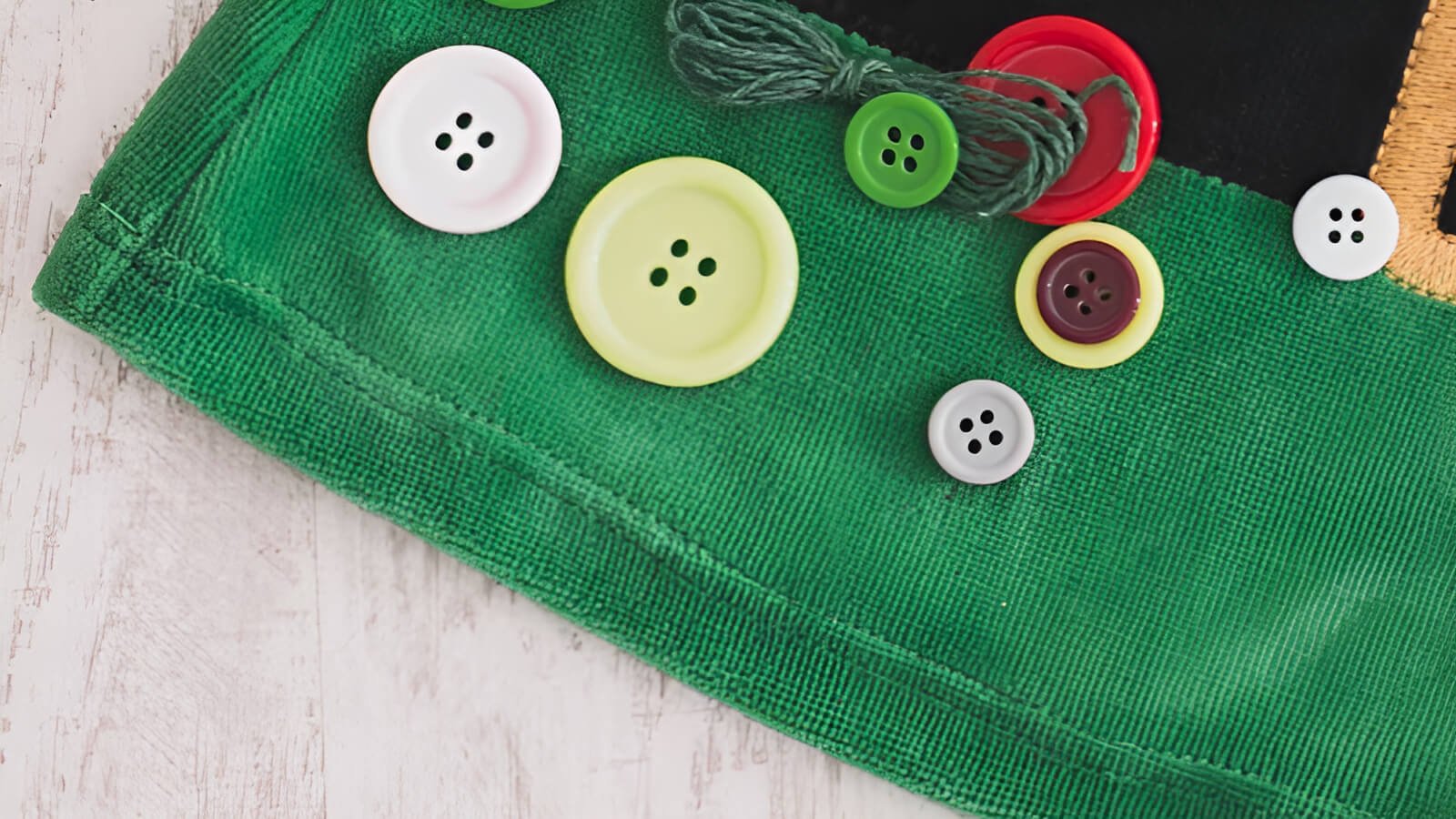
4.1 Plastic
Plastic is a very, very common material for buttons. Why? Because plastic buttons can be made in almost any color you can think of, and in many shapes and sizes. They are usually strong enough for everyday clothes and don’t cost a lot of money.
Many buttons on your shirts and pants are probably plastic. Plastic is a common material for buttons. A type of plastic often used is polyester resin. This gives an idea of what materials are used to make clothing buttons.
4.2 Metal
Metal buttons are usually very strong and can last a long, long time. You see them on jeans – that tough button at the top of your jeans is a metal button! You also see metal buttons on blazers (smart jackets) and coats.
They can be plain, or they can have designs or words pressed into them. They are often made from mixtures of different metals, called metal alloys, to make them strong or look a certain way, like shiny or old-looking.

4.3 Wood
Wooden buttons give clothes a nice, natural look. Sometimes this look is called ‘rustic’ (like from the countryside) or ‘earthy’. They are made from natural wood and can be simple and smooth, or have patterns carved into them. They can feel warm when you touch them.
4.4 Shell (Mother of Pearl)
These are very beautiful buttons! They are made from the shiny inside layer of some seashells. This shiny material is often called Mother of Pearl (Materials: Mother of Pearl). Shell buttons look very pretty and elegant. You often find them on fancier shirts or blouses because they have a special, soft shine that changes color a little when you move them.
4.5 Other materials
- Fabric: Like we learned, some buttons are covered in fabric. This fabric can match the clothes or be different for a nice look.
- Glass: Glass buttons can be very colorful and shiny, like little jewels. They are often used as decorations but can break more easily than plastic or metal ones, so you have to be a bit careful.
- Coconut shell: These are like wooden buttons but made from coconut shells! They have a unique, natural look and a different texture (feel) than wood.
- Recycled materials: This is great for our planet! Some buttons are now made from recycled or upcycled materials. This means old materials are used to make new buttons. Buttons made from recycled or upcycled materials.
4.6 How material choice can be important
Why does the material of a button matter? Well, for a few reasons. First, some materials are stronger than others. A metal button is usually much stronger than a delicate shell button. Also, Also, the button material affects garment care. This means you might need to wash your clothes in a special way depending on the buttons.
For example, clothes with very delicate shell buttons might need to be washed gently by hand. The material also helps the button match the clothes. A heavy winter coat might look good with strong metal buttons or large wooden ones. A light summer shirt might use small plastic buttons or pretty shell buttons. This shows how to choose buttons for different fabrics.
Buttons might seem small, but they are very important fashion details! They can really change how a piece of clothing looks. Choosing the right button is a big part of fashion design. We can call this button styling. A beautiful button can make a simple dress look elegant.
A fun, colorful button can make a plain shirt look more exciting. This shows the importance of button selection in fashion design and the role of buttons in garment aesthetics and branding.
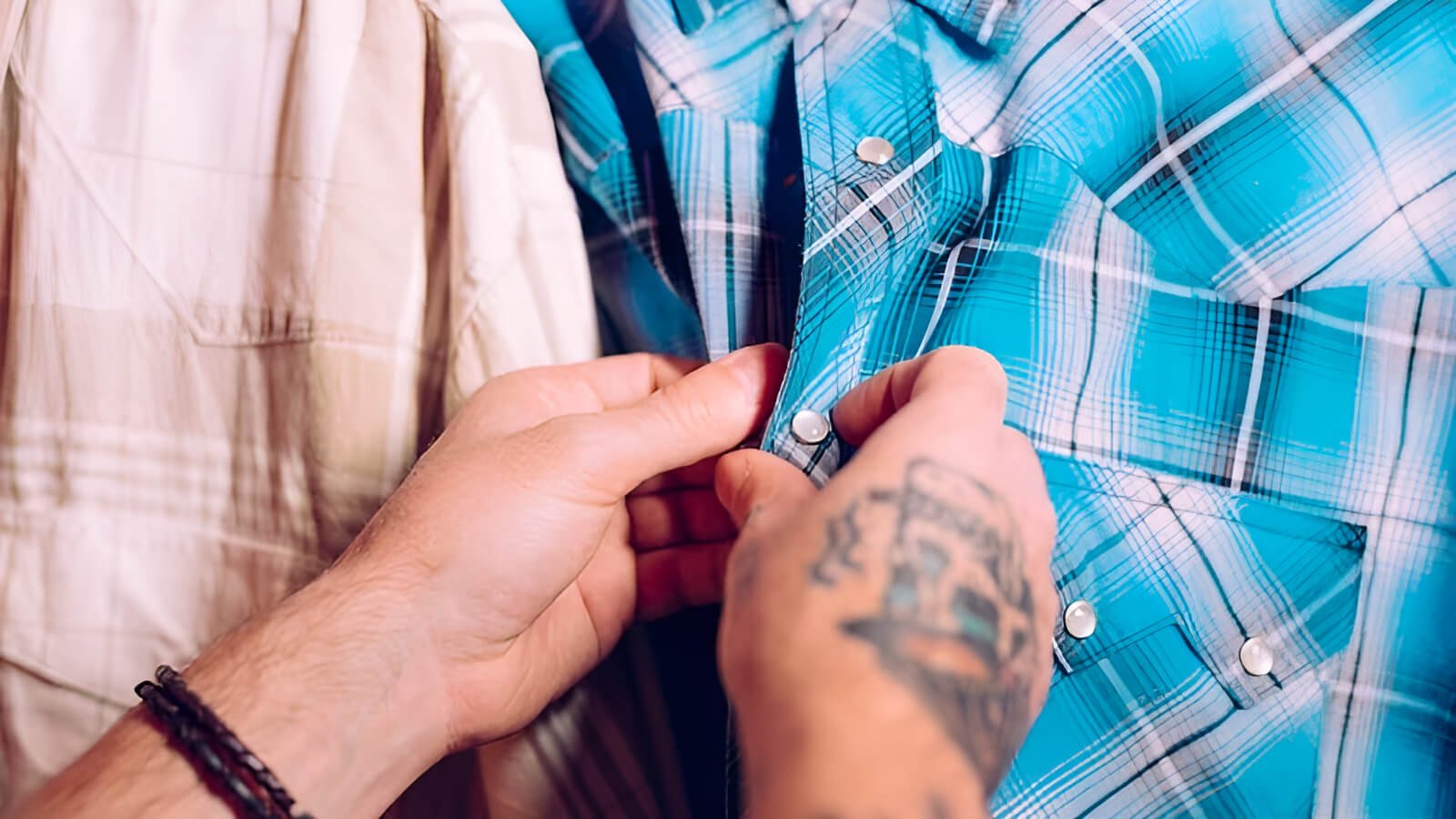
Sometimes, clothing brands use very special or unique buttons that you don’t see everywhere. This can be a small way they show their style or what their brand is about. For example, a brand that cares a lot about nature might always use wooden or coconut shell buttons.
Choosing all the little details like buttons is very important for the overall presentation (how the clothes look when finished) and how people feel about a brand. Designers choose buttons for garments very carefully. They think about how the buttons will make the clothes look and feel.
When good clothes are made, people think about all the parts, including the buttons. This is part of good garment construction (how clothes are put together). A button that matches the fabric, fits the style of the clothes, and is sewn on well shows that the clothes were made with care and quality.
6.1 Usually by sewing
So, how do these buttons actually get onto our clothes? Most of the time, buttons are put on by sewing. This sewing can be done by hand, using a needle and thread. Or, in big factories where many clothes are made, special sewing machines do this job very quickly and neatly. This explains how buttons are attached to fabric in garments. Buttons are sewn onto the textile (which is just another word for the fabric or cloth clothes are made from).
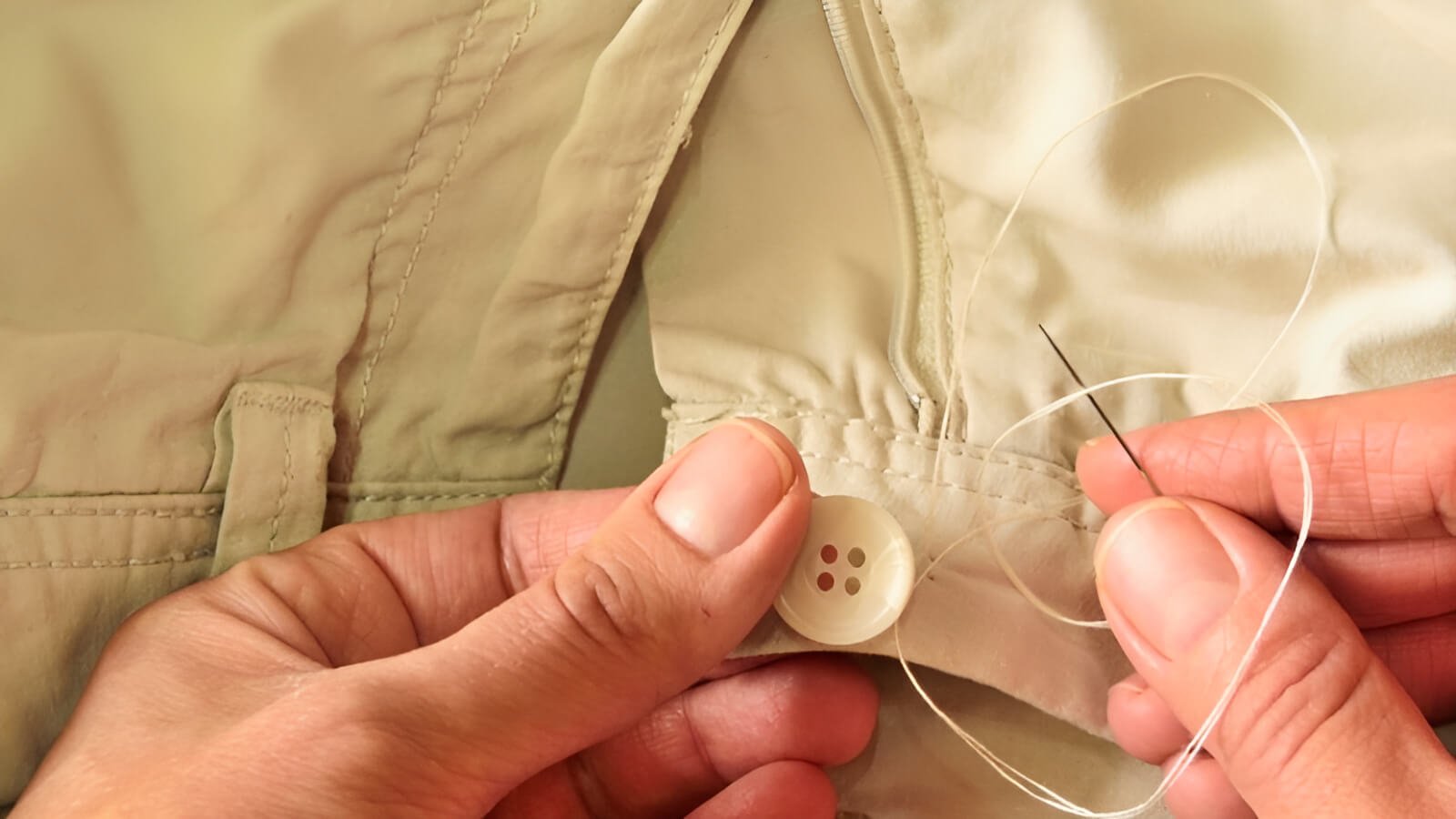
6.2 A strong attachment is important so they don’t fall off
It is very important that buttons are sewn on well and tightly. If they are sewn on loosely, they can wiggle around, and then they might fall off! If a button falls off, you might lose it, and then your clothes won’t close properly.
Here are a few more interesting little things to know about buttons:
Buttons are not all the same size. They can be very tiny, like on a baby’s shirt, or medium-sized, like on your school shirt, or quite large, like on a big winter coat. The size of the button is chosen carefully to fit the clothes and the buttonhole properly. Sometimes, button sizes are measured in a special way using a word called ‘Lignes’ (you might see this written as ‘L’). This size (measured in Lignes or mm/inches) is a standard. For example, a common shirt button – size – 16L (Ligne). But usually, you just need to know if the button is small, medium, or large for the job it has to do.
Where buttons are put on clothes is also very important, and this is called button placement. Designers and people who make clothes think carefully about button placement so that the clothes close correctly, fit your body well, and also look good.
Buttons are not a new invention! People have used things that work like buttons to fasten their clothing for thousands and thousands of years. So, the history of clothing fasteners is very, very long! Of course, the buttons from long, long ago were much simpler than many of the fancy buttons we have today.
Explore more:
So, now you know! Buttons are much more than just little round things on your clothes. They are super helpful for closing our clothes and keeping them neat. And, as we saw, they can also be a very important part of making our clothes look good and stylish.
This shows the meaning and importance of buttons on clothes – they work hard and look good! We hope this guide has explained how buttons are used in apparel in a way that was easy for you to understand.
At Packlove, we understand that every little detail helps make a product special – from the buttons and labels on clothes to the tags and bags they are presented in. All these details show how much care and style a brand has.
If you are creating your own clothing line or other products and want them to look absolutely their best, why not take a look at our Value Booster Kit? It has wonderful custom tags, labels, and packaging options to help your items truly stand out. Or, if you have any questions, please Contact Us for friendly advice and help with your branding needs!






















